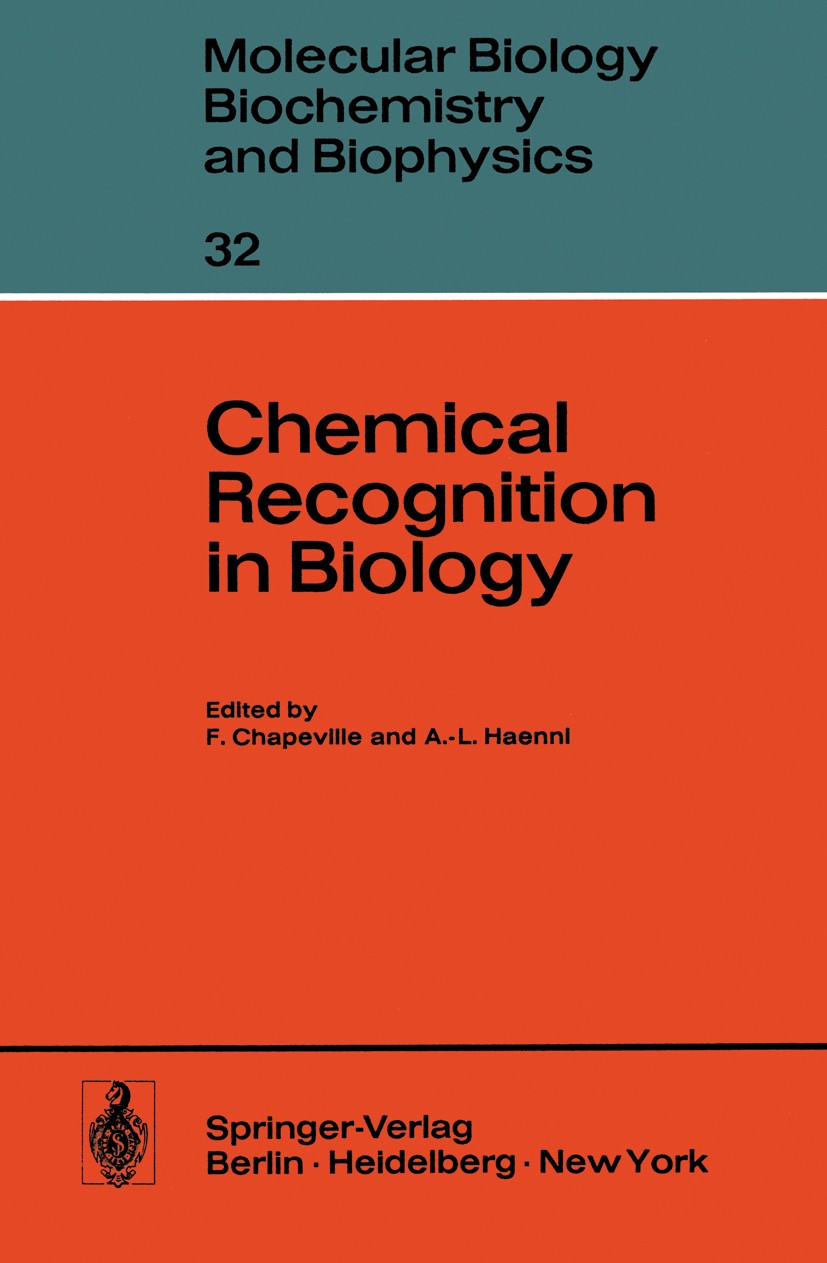| 书目名称 | Chemical Recognition in Biology |
| 编辑 | F. Chapeville,A.-L. Haenni |
| 视频video | http://file.papertrans.cn/225/224409/224409.mp4 |
| 丛书名称 | Molecular Biology, Biochemistry and Biophysics‘ Molekularbiologie, Biochemie und Biophysik |
| 图书封面 |  |
| 描述 | Studies of chemical recognition in biology were initiated about half a century ago with the flrst kinetic data obtained on enzyme catalysis and inhibition. They led to a rather static representation of the recognition process illustrated by the lock and key model that still continues to influence our overall image of recognition and its specificity. In several cases, crystallographic studies of enzyme-substrate complexes have supported this model. Indeed, in a crystallized ligand-enzyme complex, a close fltting is observed between the active center of the enzyme and the functional groups of the ligand. How ever, this does not necessarily result from a direct recognition process between rigid structures, but may result from a progressive adaptation during which the initial struc tures of the enzyme and the ligand are modified (induced-flt mechanism). Recently, a great deal of work has been devoted to the study of recognition in more complex systems such as the replication or the translation machin~ries; clearly, the extraordinary precision of such systems cannot be explained solely in terms of physical matching between enzymes and their substrates. This has led to a noticeable cha |
| 出版日期 | Book 1980 |
| 关键词 | Eiweisssynthese; Enzymatische Regulation; adaptation; biology; enzymes; translation |
| 版次 | 1 |
| doi | https://doi.org/10.1007/978-3-642-81503-4 |
| isbn_softcover | 978-3-642-81505-8 |
| isbn_ebook | 978-3-642-81503-4Series ISSN 0077-0221 |
| issn_series | 0077-0221 |
| copyright | Springer-Verlag Berlin · Heidelberg 1980 |
 |Archiver|手机版|小黑屋|
派博传思国际
( 京公网安备110108008328)
GMT+8, 2025-11-17 12:08
|Archiver|手机版|小黑屋|
派博传思国际
( 京公网安备110108008328)
GMT+8, 2025-11-17 12:08


